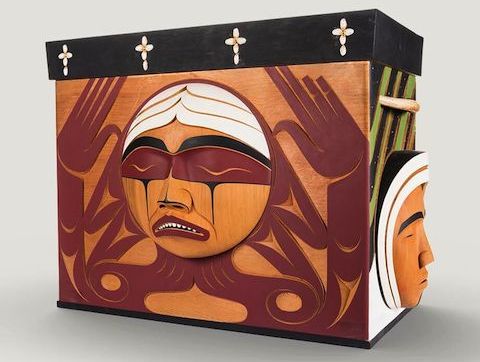Truth and reconciliation
exhibit_trc_main_610x407

For over a century, the Indian Residential School system in Canada violated the rights of First Nations, Inuit and Métis children. Canada’s Truth and Reconciliation Commission (TRC) was established in 2008 with the goal of contributing to truth, healing and reconciliation. The TRC hosted public events, gathered statements, and collected historical documents. In June 2015, it delivered its summary report, with a final report expected within the coming months.
An exhibition about the TRC in the Level 7 “Inspiring Change” gallery displays the beautifully carved Bentwood Box as its visual centrepiece. Made from a single piece of red cedar by Coast Salish artist Luke Marston, the box accompanied the TRC during events held across Canada, receiving diverse offerings from participants – including the ashes of tissues containing the tears of survivors.

Above the box, a photographic “medallion”, bordered by braided sweet grass, holds photographs that reflect the story of the TRC.

The Museum houses six different exhibits that explore the tragic story and legacy of residential schools, which is among Canada’s most pressing human rights concerns. As a national museum and hub of human rights education, the Museum has an important role to play in efforts towards reconciliation between Indigenous and non-Indigenous people in Canada.
The Museum is working to keep the conversation alive, examine injustices and contribute to education as a powerful tool towards reconciliation.











